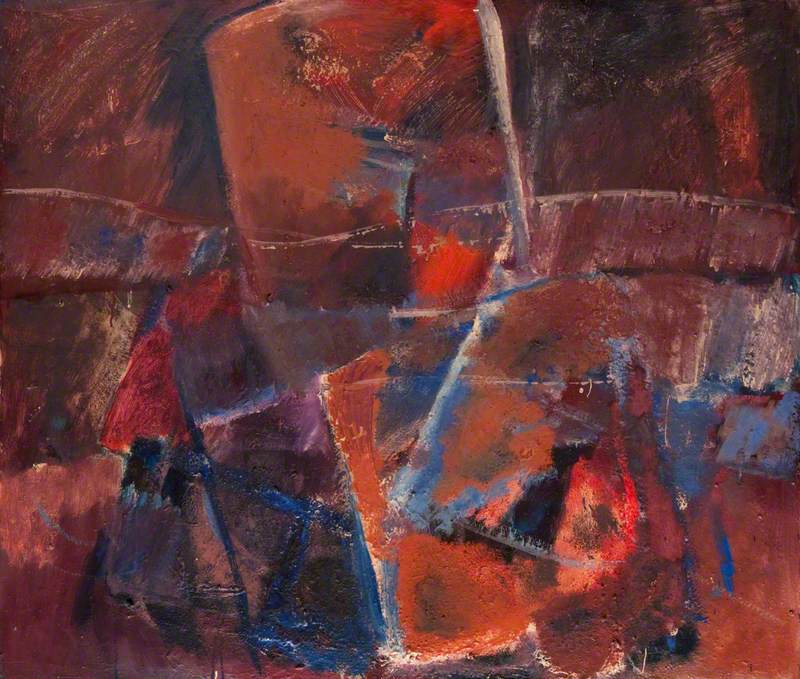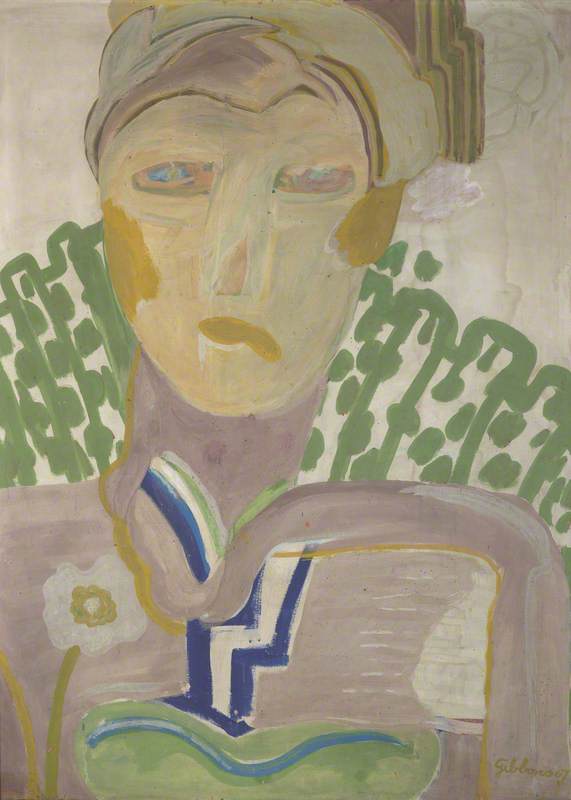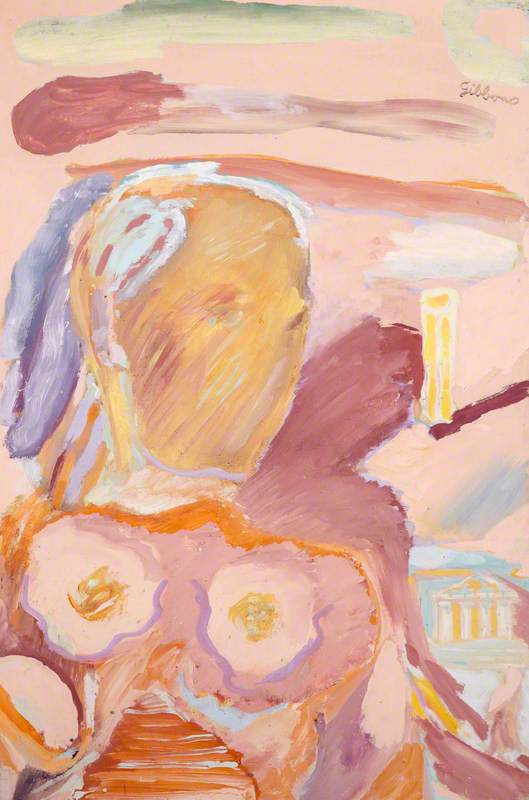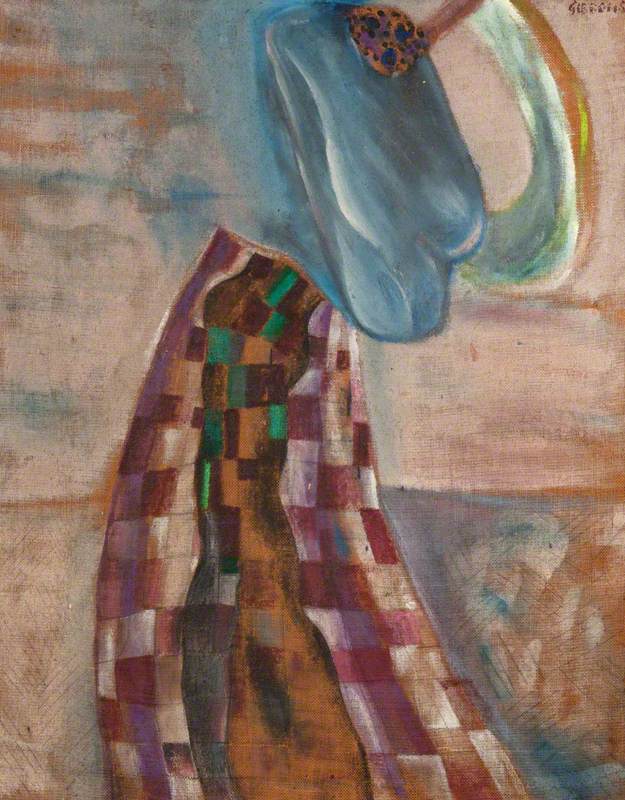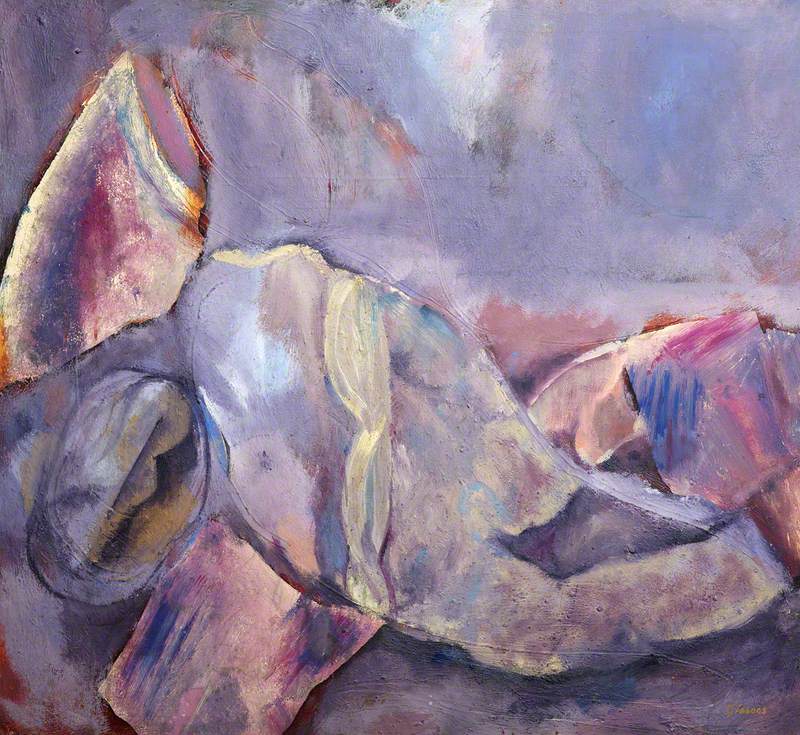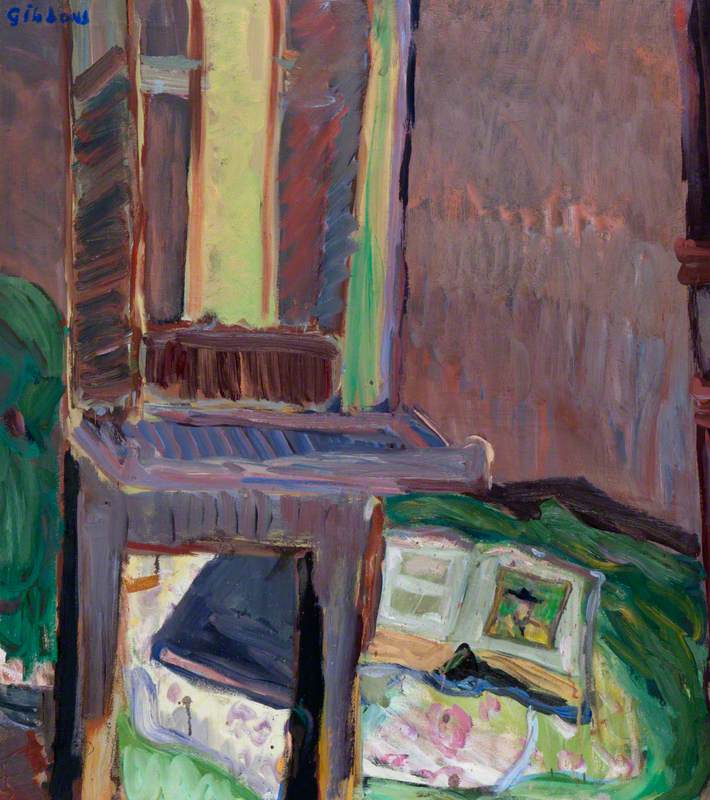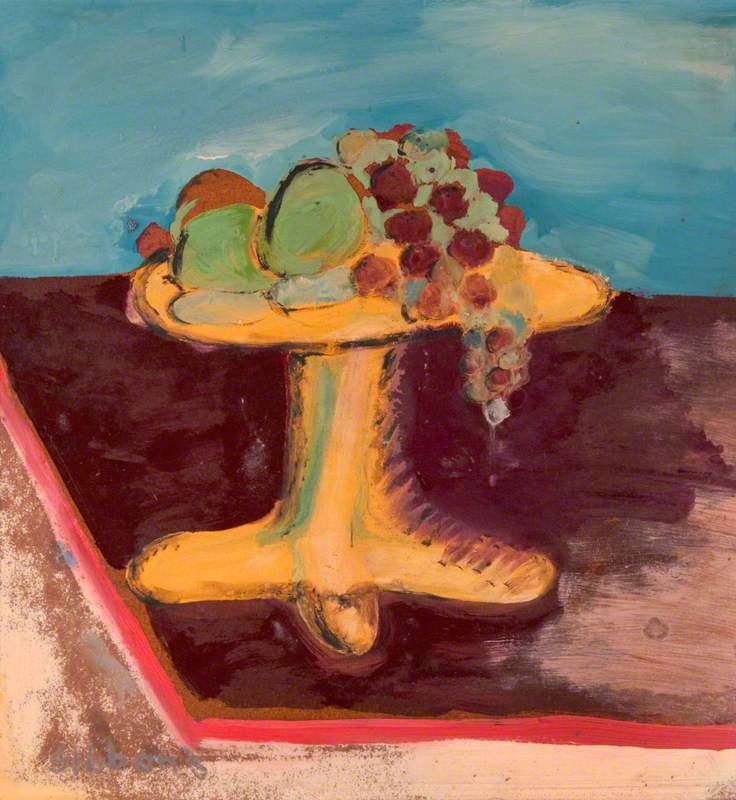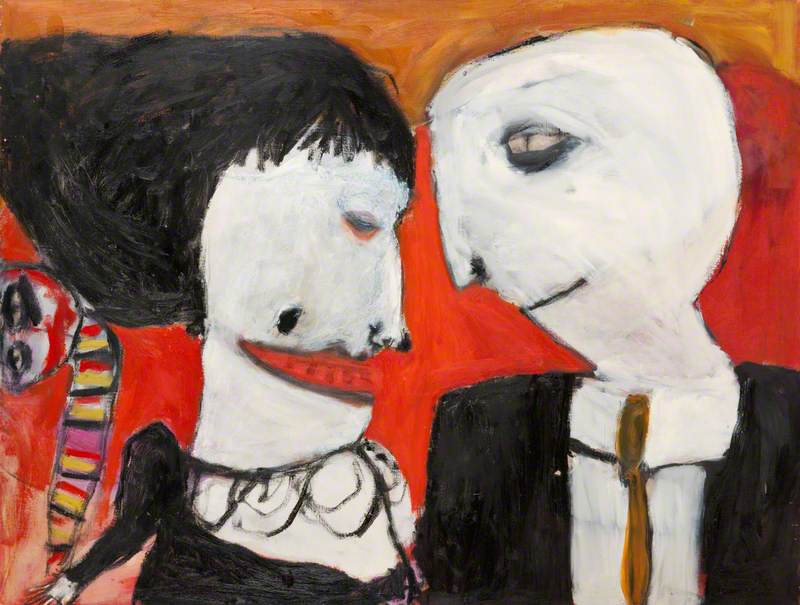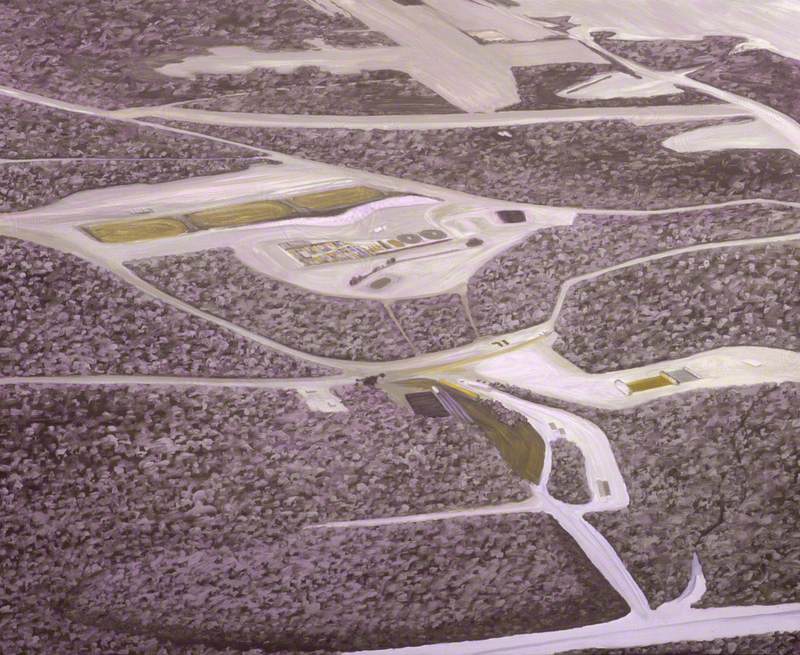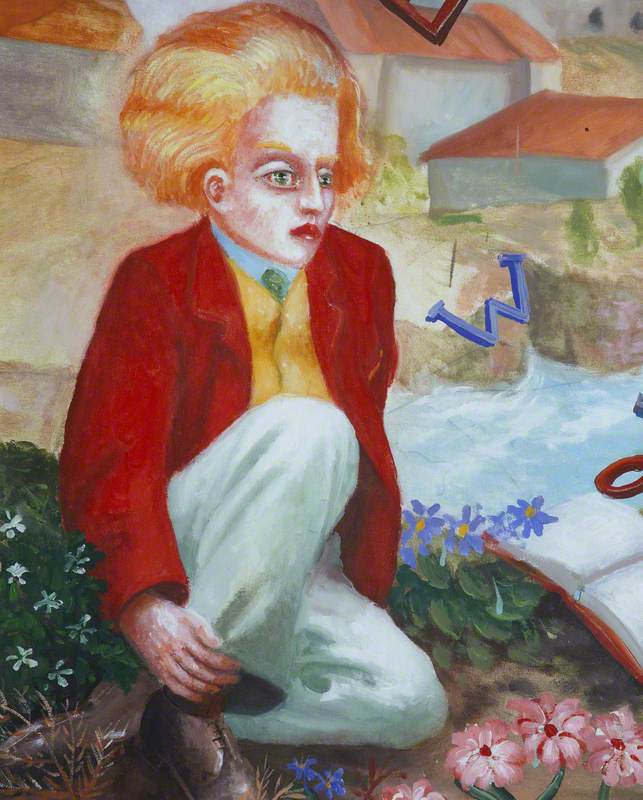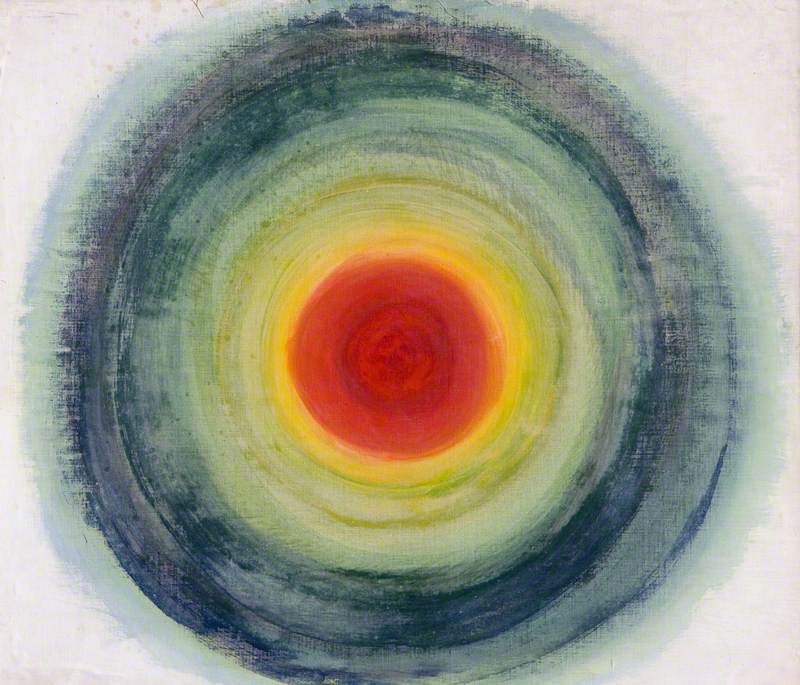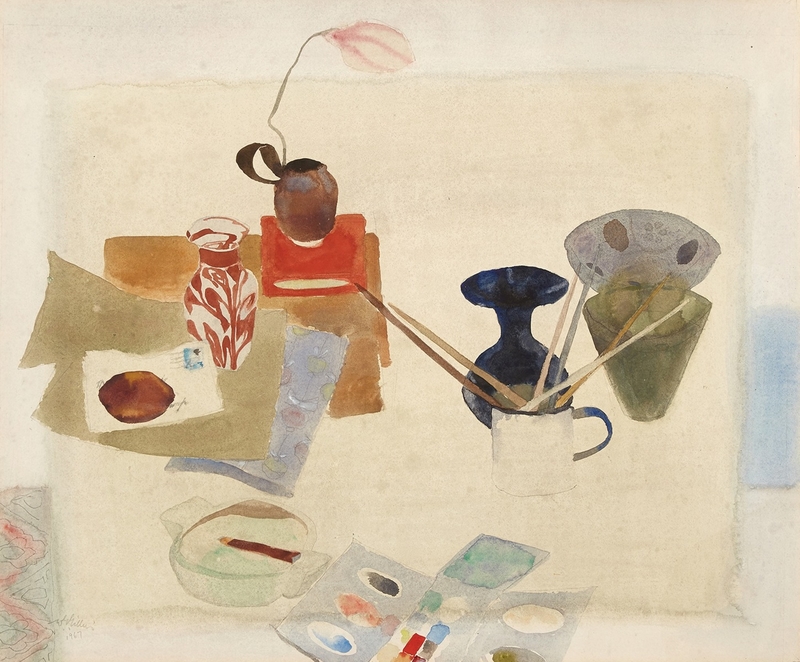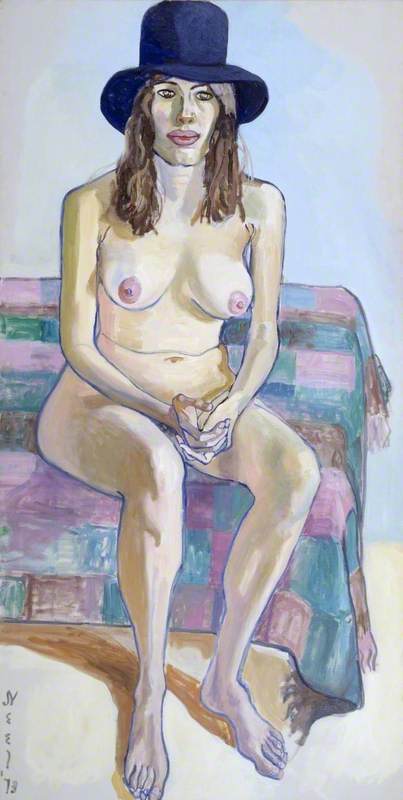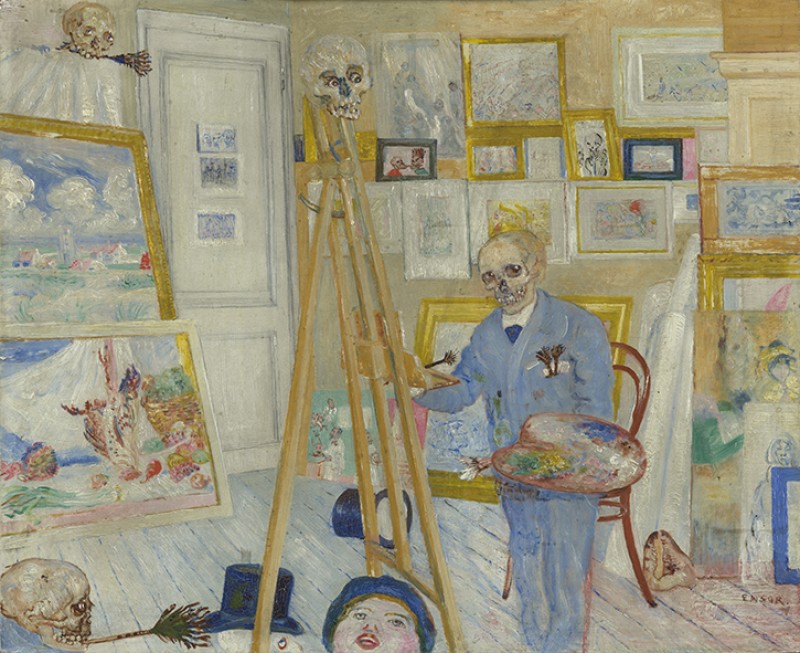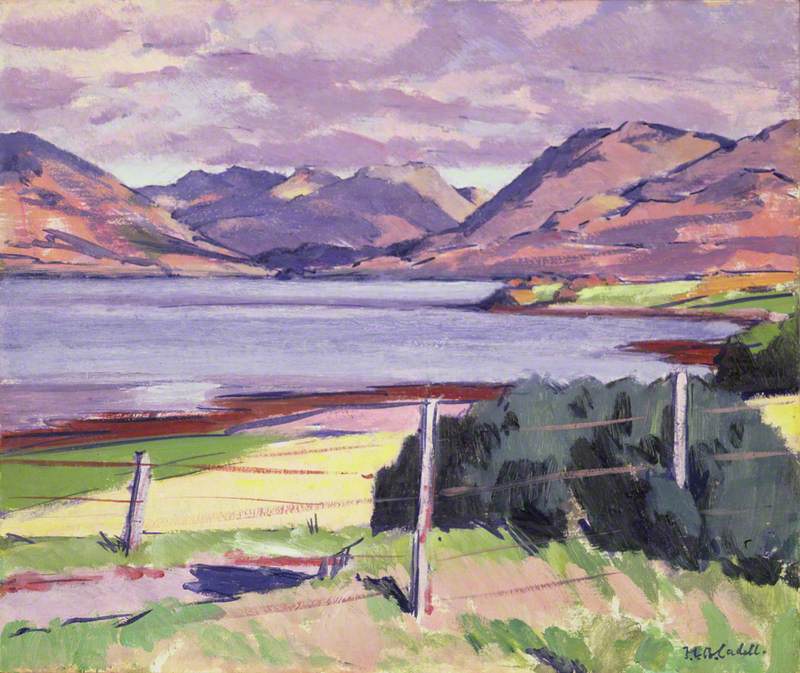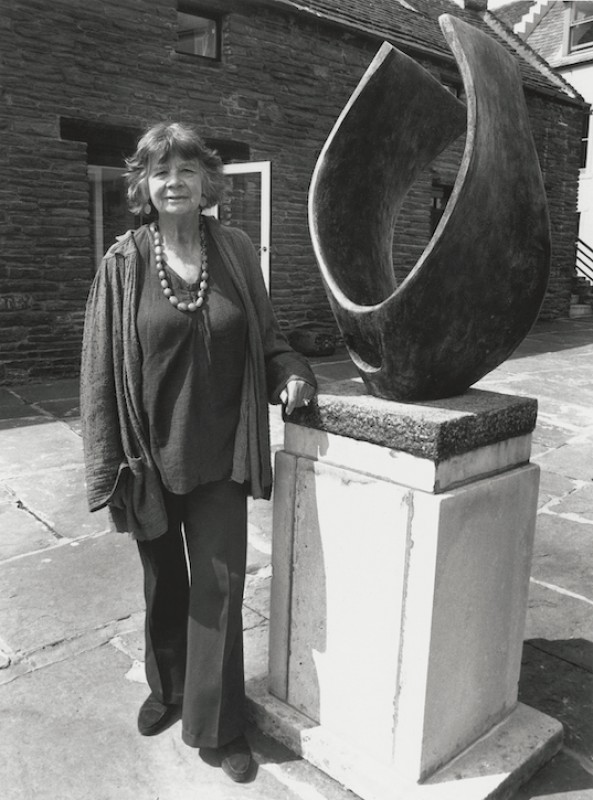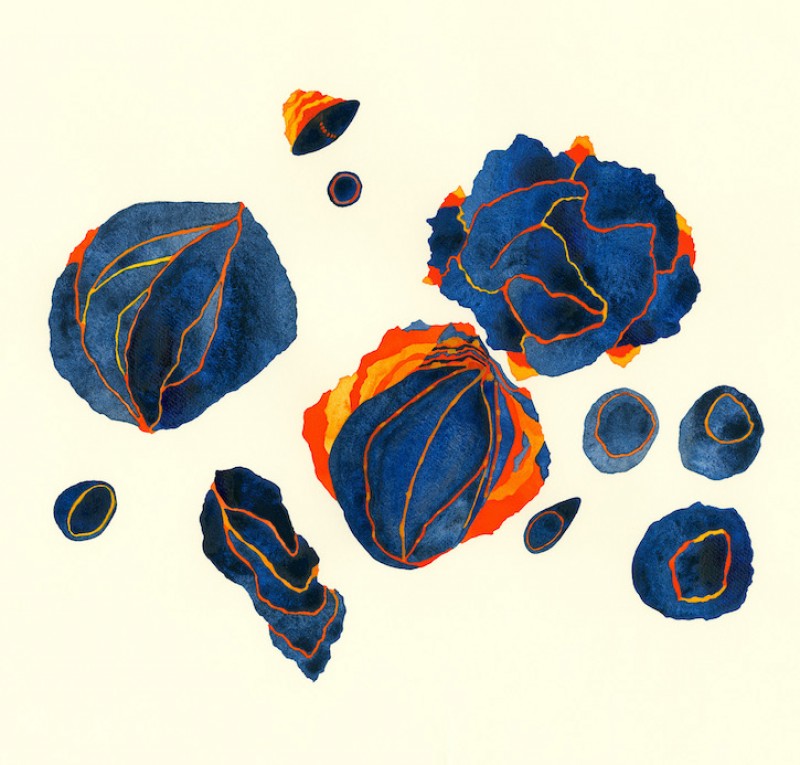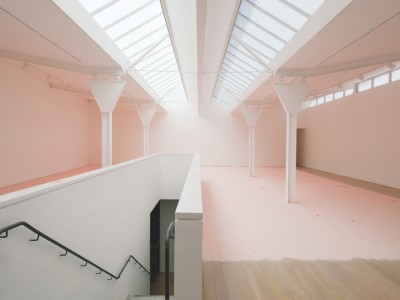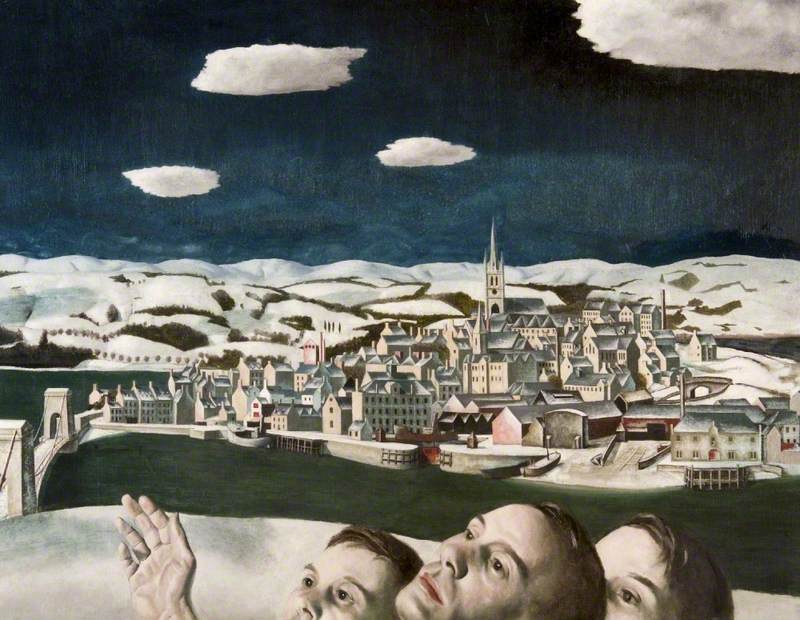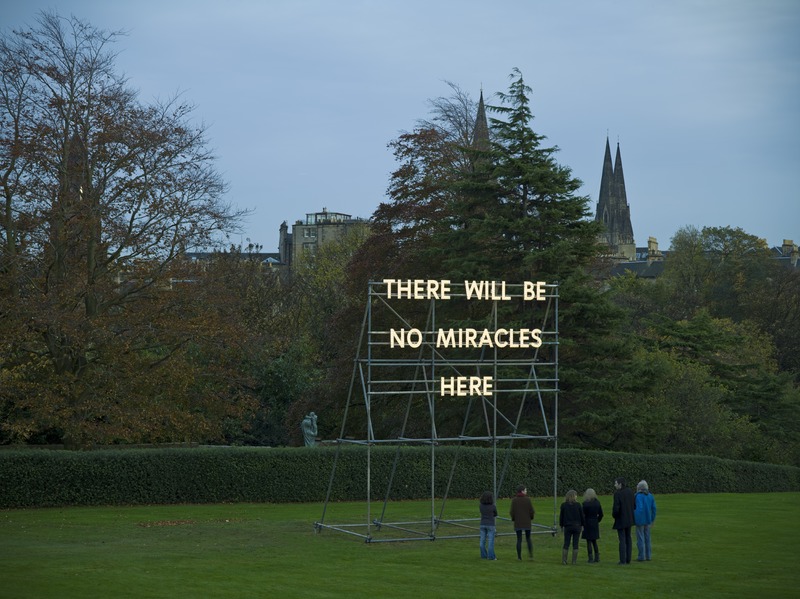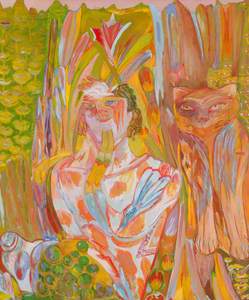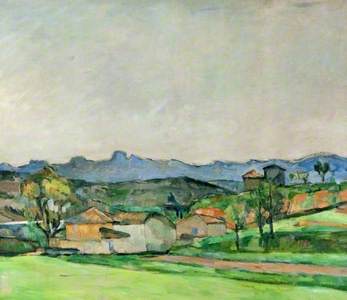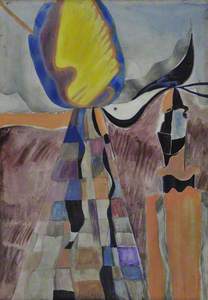Carole Gibbons is a painter based in Glasgow. She studied drawing and painting at The Glasgow School of Art, graduating from the institution in the late 1950s along with her peers Alan Fletcher and Douglas Abercrombie.
Gibbons' work developed throughout the following years, with her early paintings focusing on mythological subjects. Later pieces comprise intricate still lifes and vivid portraits, often also threaded through with references to classical themes.
Her work was regularly included in group shows in Scotland and elsewhere in the UK, culminating in a solo exhibition at the Third Eye Centre (now CCA) in Glasgow in 1975. With the exception of significant periods of time spent in Spain, Gibbons has worked consistently from her home and studio in Finnieston, Glasgow.
Horse in an Andalusian Landscape I
(diptych, left panel) 2001
Carole Gibbons (b.1935) 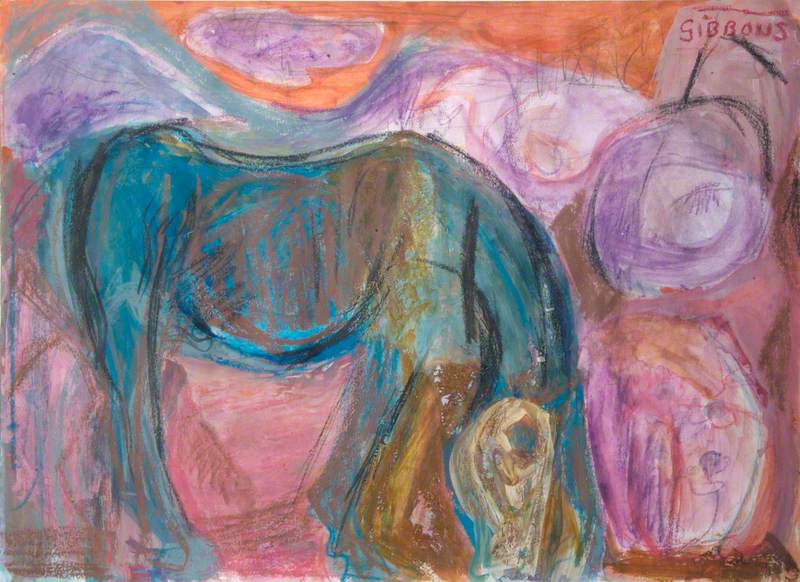
The full significance of her practice has not been widely recognised until relatively recently. Earlier this year, the first monograph on her painting was published by Glasgow-based small press 5b.
It was accompanied by two exhibitions of her work in Glasgow, at 20 Albert Road and Céline, both of which have helped to further cultivate a renewed interest in her oeuvre.
As Susannah Thompson wrote in an Artforum review of her exhibition at Céline: 'Gibbons may be the most famous artist you've never heard of.'
Gibbons is featured in 'Women in Revolt! Art and Activism in the UK 1970-1990' at Tate Britain, and will have her first exhibition in the United States next spring at White Columns, New York.
Calum Sutherland, Art UK: You've dedicated much of your life to painting.
Carole Gibbons: All of my life!
Calum: Correction, all your life! You've moved through various subjects from myth to landscape, and still life to portraiture. I wanted to ask, why painting? Or maybe the simpler question is, was there a moment when you fell in love with the pursuit of being a painter?
Carole: I always drew, even as a small child. I was just good at drawing. And, of course, all children are creative but they get it knocked out of them. I got a place on a small arts programme. There was an opportunity put around the schools in Glasgow for talented people.
I was at Shawlands (Academy) and was chosen to go to Castle Toward in Dunoon, where a group of students from different schools met and painted plein-air landscapes. So that's how I got into art and pointed towards art school.
Calum: Were you supported by other people too?
Carole: I was supported by a couple, a painter called Sinclair Robert Thomson and his wife, Florence Jamieson. They painted in their studios – real artists, in other words, not teachers. And they pointed me in the direction of The Glasgow School of Art. Otherwise, I don't think I would've got there.
Calum: And were you painting a lot before you got into art school or were you mostly drawing?
Carole: I was painting. I'd done some landscapes up in the Highlands. And two watercolours got me into The Glasgow School of Art. Most people sat exams, but these two paintings got me into the art school.
I was late in applying, and the director said, 'Well, I think I'll let you in on the strength of these.' And that was a turning point. It saved my life getting into Glasgow School of Art. It was such a beautiful building. I thought, 'God, what kind of building is this?' It was so modern. I'd never seen anything like it because I lived in an old house in Langside (in Glasgow).
Carole Gibbons' St Vincent Crescent studio, Glasgow, 2023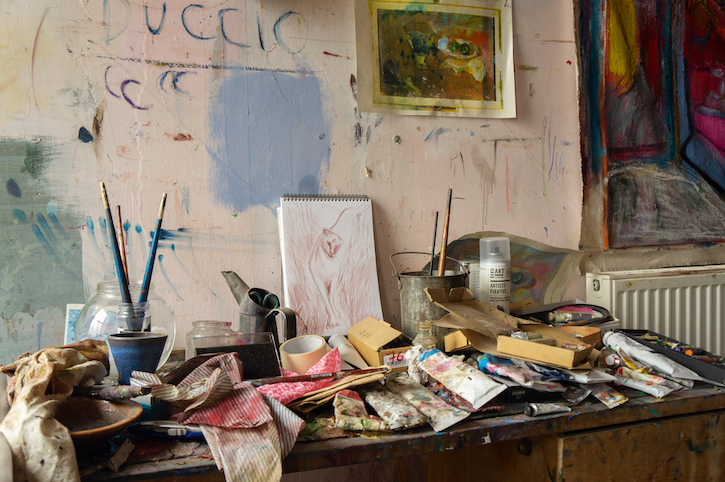
Calum: There's an image of your studio in the new monograph published by 5b. It features the name Duccio painted on the wall. It made me think about other painters, their heroes and elective affinities with other artists.
Andrew Cranston's list in his essay in the publication features Henri Matisse, Pierre Bonnard, Edvard Munch and Paula Modersohn-Becker. I was wondering if you have a list of artists that you always return to?
Carole: For me, Cézanne is the master. Picasso too. My peer group all left Glasgow to paint in London. They were abstract painters but I remained figurative. I wrote Duccio on the studio wall because I had seen a reproduction of a Duccio Madonna. And I was very impressed by it so I wrote his name on the wall. To remind me!
Calum: But the main artists that you return to are Picasso, Cézanne, Bonnard ...
Carole: Yes, I like Bonnard. And I've always got Cézanne in mind.
Calum: Do you feel like you're making work for a particular audience or the public? In other words, are you painting for a certain type of person, or are you painting for other painters?
Carole: Oh, probably for the painters who know about art. And for my peer group, you know? They're very important to me.
Calum: How planned are your paintings? Have they emerged in different ways in the studio over the years – perhaps from a drawing, a piece of text or an idea?
Carole: Some are an inspiration; they are just done in one go, almost. And others are quite a struggle. I often persist at the same painting. And I'll do drawings to take a break. That's when you know you're doing something new – when you're struggling.
Calum: And given the variation in your work across time, what do you feel makes a successful painting?
Carole: Oh, crikey! What makes a successful painting? That's a big question.
Calum: I have in mind Xie He's Six points to consider when judging a painting. These are roughly: vitality, brushwork, form, use of colour, composition and the study of models from life and canonical works.
Carole: That's it. All in one.
Calum: Are you looking for the work to do something moral, emotional or political? Or is there something more personal, a kind of honesty or feeling?
Carole: I think it's personal. I don't think I'm political, but I am a feminist. I want that on the record.
Calum: Are there shows in your career that felt particularly significant or that spelled out a change or new direction?
Carole: I had a major exhibition at the Third Eye Centre, now called the Centre for Contemporary Arts, in 1975.
Calum: And the 1986 show Talbot Rice Gallery, Edinburgh?
Carole: Oh, yes, that's right. That was organised by Alasdair Gray and Duncan Macmillan, who wrote Scottish Art in the 20th Century.
Calum: I was thinking about the 2012 show with Lucy Stein at Gimpel Fils too.
Carole: That was terrific of Lucy to organise that, because I was very anxious to get my work out of Scotland and down to London. That was a major thing for me – to have my paintings in London. And although my peers were there, they didn't have influence on galleries. I would always go down to keep in touch. I went down every year to see what was happening in painting, to see what they were doing.
Calum: Do you feel there are any misunderstandings of what you do as an artist? I was thinking about something you are quoted as saying in Lucy Stein's essay in the monograph, 'I was always bemoaning my fate in Glasgow. I was bored to tears.'
Carole: Well, that was probably true. Apart from my painting, of course. I was lucky as a painter. And well, the thing is, I didn't feel connected. I felt connected to London and to my peer group. My thoughts were always somehow down there.
I did have a friend in Edinburgh called Sheila Ross who gave me a show at the Traverse Theatre Gallery. We did the space up overnight, painted the walls silver and hung my show. And a painting from that show was bought by Aberdeen Art Gallery & Museums (The Artist and His Muse, below). That was one of the first art galleries to buy my work.
Calum: Are there any influences outside of art that you could discuss? I understand you've been interested in James Joyce's work and Greek mythology.
Carole: Oh, I love James Joyce. And yes, I'm influenced by Greek mythology. When I was in the Highlands as a child during the war my parents sent me books on Greek mythology and they were beautifully illustrated.
I was always influenced by the Greeks, but then I reached the point where I had finished – I couldn't go any further. I phoned Douglas Abercrombie in London and said, 'I'm finished. That's it. I'm out the game.'
And he suggested I set up a still life. So that's when I set up the head that I found in the street and started that as a still life. There's a big painting somewhere of that first head image. And then I went on to paint still lifes.
Calum: Were there any specific influences on the still lifes?
Carole: Again, Cézanne. There are so many lessons to learn from Cézanne, it's very difficult. There's also an influence of Cubism and Braque. And I couldn't do without The National Gallery or Tate Britain.
Calum: Are you excited to have a painting shown in London again? For 'Women in Revolt! Art and Activism in the UK 1970–1990' at Tate Britain.
Carole: Oh, very happy. I couldn't be happier.
Calum Sutherland, artist and writer
'Women in Revolt! Art and Activism in the UK 1970–1990' is at Tate Britain until 7th April 2024
This content was supported by Creative Scotland
Further reading
Debi Banerjee, 'Waiting Figure in a Landscape: The Painting of Carole Gibbons', Visual Culture in Britain, 21:1, 2020, pp. 114–132
5b, Carole Gibbons, 2023

